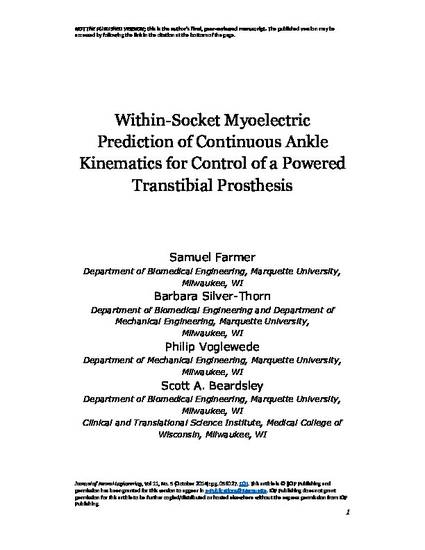
Objective. Powered robotic prostheses create a need for natural-feeling user interfaces and robust control schemes. Here, we examined the ability of a nonlinear autoregressive model to continuously map the kinematics of a transtibial prosthesis and electromyographic (EMG) activity recorded within socket to the future estimates of the prosthetic ankle angle in three transtibial amputees. Approach. Model performance was examined across subjects during level treadmill ambulation as a function of the size of the EMG sampling window and the temporal 'prediction' interval between the EMG/kinematic input and the model's estimate of future ankle angle to characterize the trade-off between model error, sampling window and prediction interval. Main results. Across subjects, deviations in the estimated ankle angle from the actual movement were robust to variations in the EMG sampling window and increased systematically with prediction interval. For prediction intervals up to 150 ms, the average error in the model estimate of ankle angle across the gait cycle was less than 6°. EMG contributions to the model prediction varied across subjects but were consistently localized to the transitions to/from single to double limb support and captured variations from the typical ankle kinematics during level walking. Significance. The use of an autoregressive modeling approach to continuously predict joint kinematics using natural residual muscle activity provides opportunities for direct (transparent) control of a prosthetic joint by the user. The model's predictive capability could prove particularly useful for overcoming delays in signal processing and actuation of the prosthesis, providing a more biomimetic ankle response.
Available at: http://works.bepress.com/scott-beardsley/18/
Accepted version. Journal of Neural Engineering, Vol. 11, No. 5 (October 2014): 056027. DOI. © 2014 IOP Publishing Ltd. Used with permission.